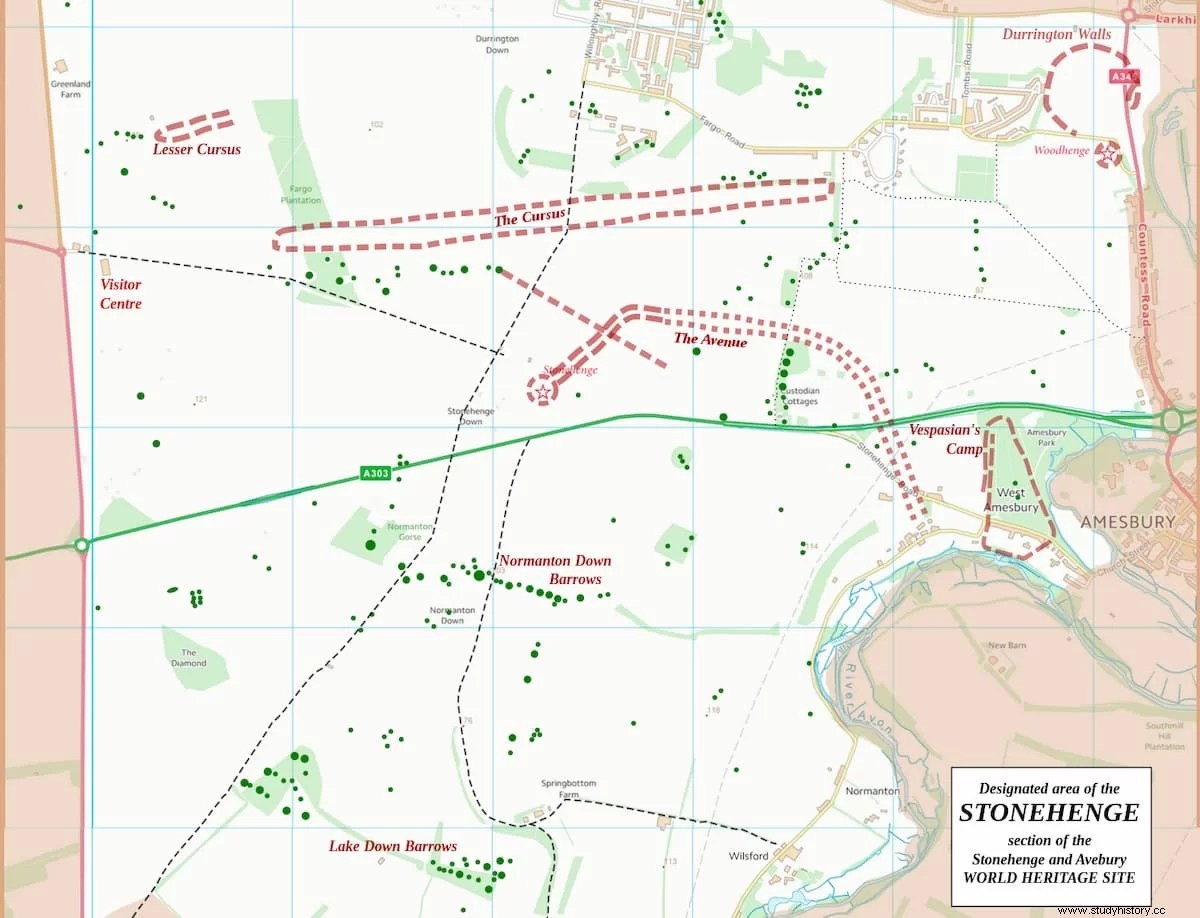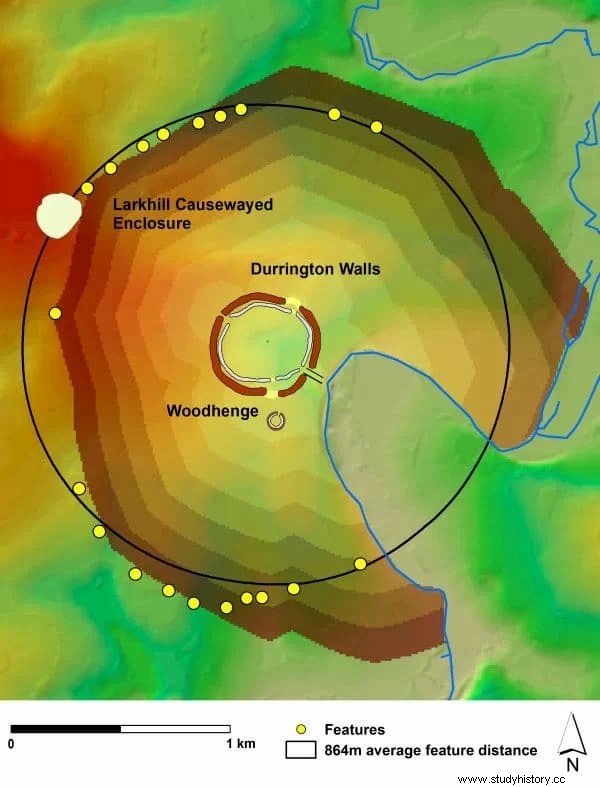What could be one of the largest prehistoric structures in the UK has been discovered near Stonehenge by a team of archaeologists led by the University of Bradford.
A huge 2 km diameter ring made up of prehistoric “pits” up to 10 meters wide and 5 meters deep has been discovered around the super henge at Durrington Walls next to the famous site of Woodhenge. The structures have been carbon dated to around 2500 B.C.
Archaeologists believe that the circle of pits marks a boundary around the huge henge of Durrington. The structure, made up of an internal line of poles, is thought to have guided people to worship sites and warned others not to cross the boundary.

Professor Vince Gaffney said it was extraordinary that such an important find had been made so close to Stonehenge. The area around Stonehenge is one of the most studied archaeological landscapes on earth and it is remarkable that the application of new technology may yet lead to the discovery of a prehistoric structure so massive that it is currently significantly larger than any comparative prehistoric monument we know in Britain .
When these pits were first detected it was thought they might be natural features – solution holes in the chalk. Only when the bigger picture emerged, through geophysical surveys conducted as part of the Stonehenge Hidden Landscape Project, were we able to connect the dots and see that there was a pattern on a massive scale .

Researchers have identified as many as 20 burial pits, but estimate there may have been more than 30 originally.
The size of the pits and circuit surrounding Durrington Walls is unprecedented in the UK. It demonstrates the importance of Durrington Walls Henge, the complexity of the monumental structures within the Stonehenge landscape, and the ability and desire of Neolithic communities to record their cosmological belief systems in ways, and on a scale, that we had never previously anticipated. /em> .
Dr Nick Snashall, National Trust Archaeologist for Stonehenge and Avebury World Heritage, said:As the place where the builders of Stonehenge lived and feasted, Durrington Walls holds the key to unlocking the history of Stonehenge's vast landscape. , and this amazing discovery offers us new insights into the lives and beliefs of our Neolithic ancestors .
The team has combined cutting-edge archaeological fieldwork with good old-fashioned detective work to reveal this extraordinary discovery and write a new chapter in the history of the Stonehenge landscape.
